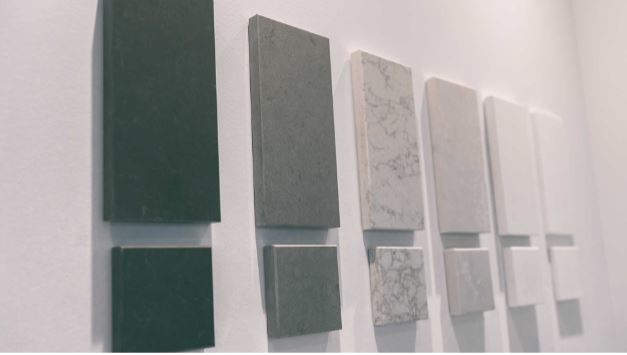Quartz Stone: Understanding the Engineering Process
Marble and granite are some of the most popular options for natural stone benchtops and worktops. However, even with their durability, natural
stones aren’t perfect. Natural stones are less smooth and are susceptible to cracks and stains when not sealed properly. Due to this, engineered stone
benchtops gained popularity for their efficient, robust design, reducing the need for stone benchtop repairs or replacements. Factory-
made quartz stone has become an excellent go-to material as the material offers the same durability yet gives a more uniform look and sufficient
elasticity. Today, we delve deeper into the manufacturing process of quartz stones and how they become suitable slabs that are just as effective as
natural stones when creating a benchtop.
What is quartz mineral?
Quartz is a mineral formed into crystals because of extreme pressure. The mineral is highly resistant to heat damage and chemical and mechanical
weathering, making it an ideal choice for benchtops, glass-making, and electronic products. It’s one of the most abundant minerals found on the Earth’s
surface and has varying colours, transparencies, and varieties. Some of the most popular kinds of quartz include amethyst, rose quartz, onyx, and tiger’s
eye.
How does raw quartz become quartz stone?
Because of raw quartz’s essential properties, quartz has become the top product for manufacturing industries to extract and process as engineered
stones for various applications, including slabs for kitchen worktops. The manufacturing process involves mixing quartz aggregated chips with additives
and resin binders. Here is the step-by-step process:
1. Extraction
Extracting quartz is done through open-pit mining. Miners use heavy machinery such as bulldozers to dig through the soil to expose the rocks. Once
exposed, the team will use chisels and other small tools to extract the quartz from the quarry.
2. Cleaning
The quartz then undergoes extensive cleaning to remove all the impurities and physical flaws.
3. Blending
93% of quartz aggregates are mixed with additives and 7% resin binder.
4. Slab Pressing
The mixture is then compressed to form slabs using the vacuum and vibration method. The mixture undergoes 100-ton pressure to minimise porosity.
5. Heating
The slabs are cured using a kiln at 85 degrees for 30 minutes. This curing process is necessary to ensure they become stain and impact resistant.
6. Prep for packing
After the curing process, the slabs undergo gauging, calibrating, and polishing. They are then cooled for 24-36 hours in an upright position. After cooling,
the edges of the slabs are trimmed and levelled.
7. Transport
After the quartz processing, the finished product is transported via land or sea and delivered to wholesale distributors. Extra precautions are necessary
to ensure they are free from damage.
The final product
The final quartz product has a consistent and uniform pattern colour, texture, and dimension while resembling the natural stones’ patterns. Due to the
high quality of this product and the efficiency of the engineered quartz manufacturing process, fabricators can create gorgeous kitchen benchtop
designs using quartz slabs.
Get benchtops made from the highest quality quartz at Stone King!
Stone King offers a range of kitchen worktops and benchtops made from quartz. You can customise the benchtop according to your preferred colour
and finish to complement the design of your kitchen. Our goal is to help you get the benchtop you need that suits your unique style, needs, budget, and
space. Plus, we can do it in 7 days! Contact us today to learn how.

